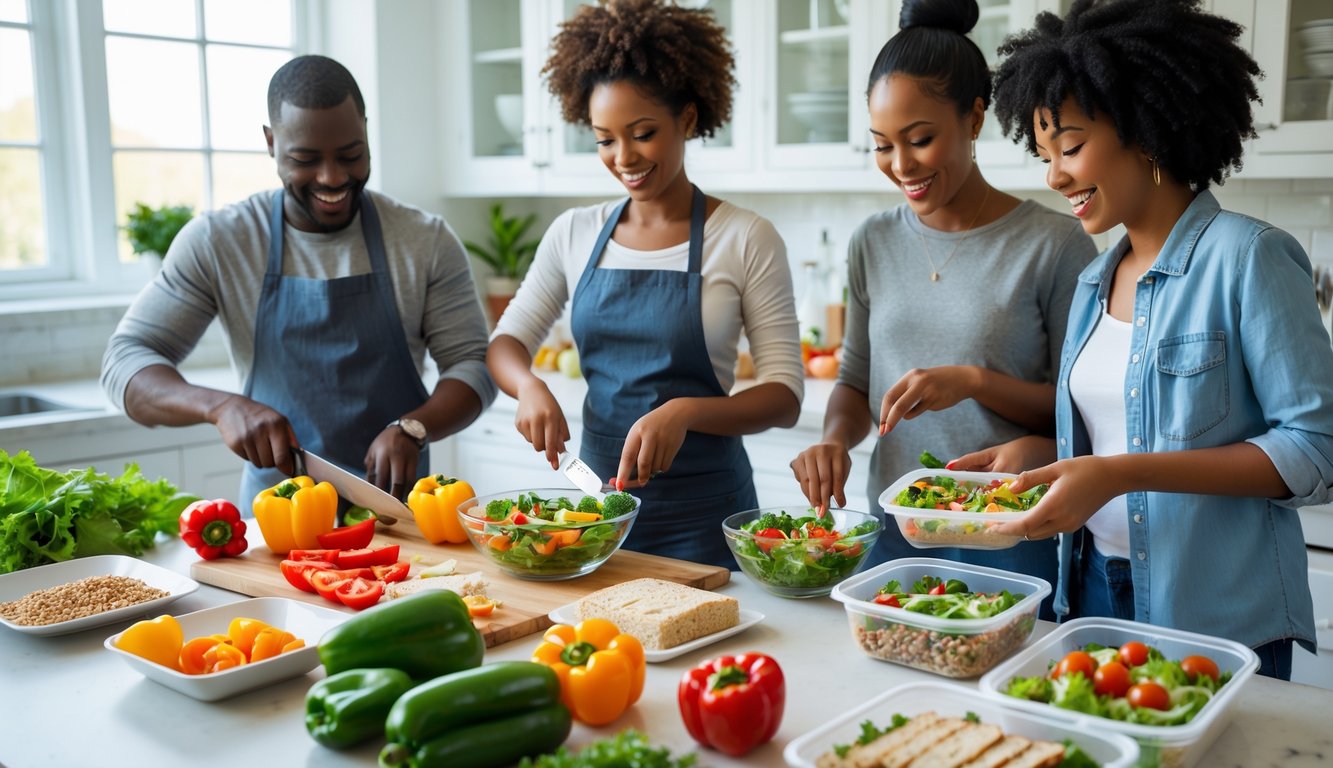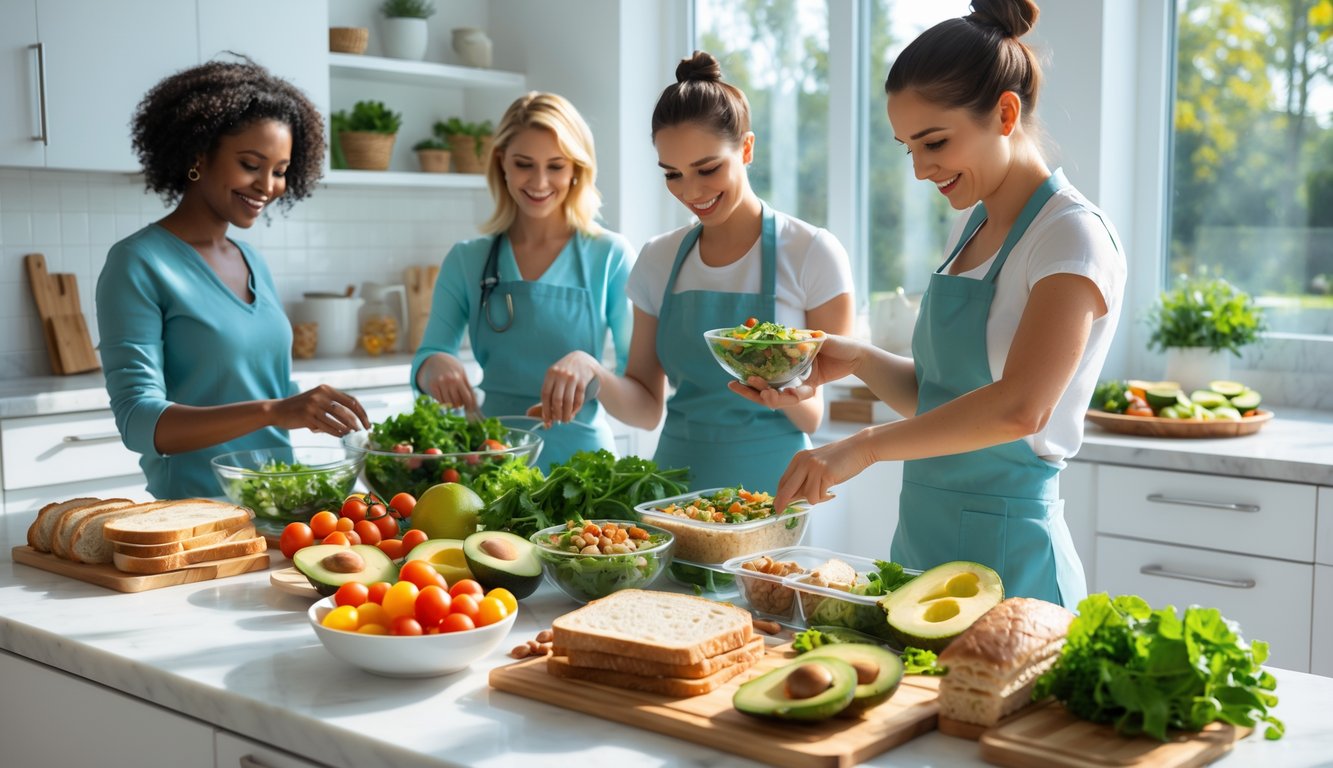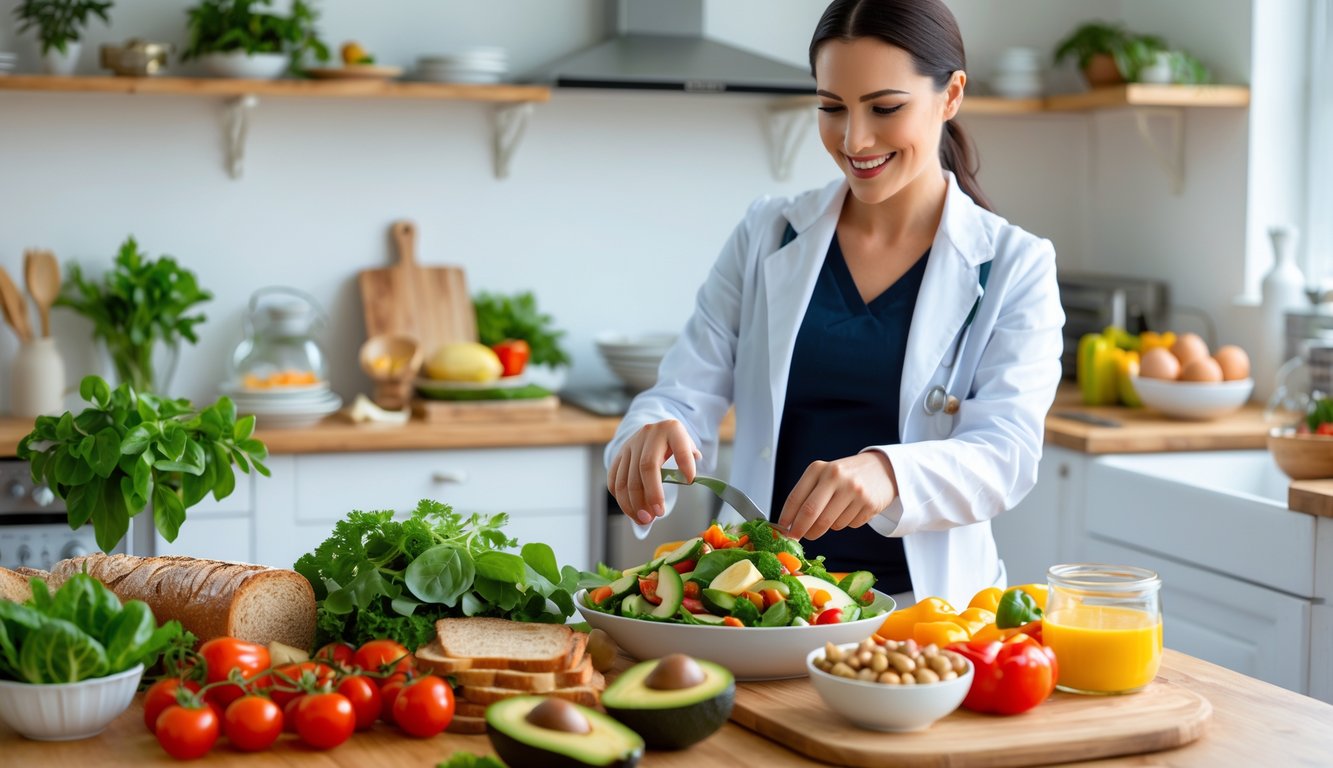
So, I’m supposed to meal prep on Sundays? Right. I’ve tried boiling chicken for the week—once. Never again. That’s not lunch; that’s a punishment. The weird thing is, every dietitian I know, whether they’re posting on Carrots and Cookies or getting quoted in EatingWell, they’re all about these quick, almost accidental lunches instead of those epic weekend meal-prep sessions. I swear, every fridge tour I’ve seen lately, there’s a random Tupperware of bulgur next to last night’s takeout, maybe a lonely energy bar. No one’s bragging about chicken breast cubes.
I keep buying these glass containers, thinking it’ll change my life, but nope—just more wilted greens and dry chicken. Kristi (RDN, actual person) once insisted pancakes work as lunch. I mean, sure? If you’re twelve. And every glossy blog swears ground turkey is the ticket, but honestly, does anyone eat that without regret? I don’t even trust my own beans after Thursday. So now I just double up on lazy tricks: wraps, grain bowls, whatever’s hiding in the veggie drawer, a sprinkle of cheese—done.
People keep asking if meal prepping is a scam. I’m starting to think it is. The only lunches I finish are the ones I barely plan. I asked three dietitian friends—two said they just throw leftovers in a bento box, maybe microwave a muffin if they remember. That’s the big secret: if lunch takes more than three minutes, it’s not happening.
Why Quick Lunch Ideas Are Gaining Popularity With Dietitians

Honestly, skipping the Sunday meal prep mountain of containers is the highlight of my week. Dietitians I talk to? They care way more about what they can throw together at 11:57 a.m. than what survived four days in the fridge. Is “prep to save time and money!” just a myth? I’m starting to think so.
The Shift Away From Meal Prepping
Tupperware lids never fit, chicken breast always dries out, and reheated quinoa? Tastes like sadness. Dietitians who actually eat lunch at their desks admit meal prepping sounds noble until Wednesday, then it’s all burnout and regret. Supposed to save money, right? Except boredom leads to food waste, and “budget” meals turn into emergency takeout.
Lisa Young, PhD, RDN, said in some 2024 webinar, “variety matters more for compliance than consistency.” That explains why people last one week on brown rice and grilled chicken, then never eat grains again. Even dietitian coworkers groan at “chicken, broccoli, rice.” Leftovers and pantry staples are winning over batch-cooked monotony.
So yeah, maybe I’m done with bulk lentil soup. If I won’t eat it, what’s the point? I want to open the fridge, see what’s there, and just wing it. And apparently, even nutrition schools are teaching this now. Wild.
Benefits of On-the-Spot Lunch Choices
No one actually likes food that tastes like leftovers, no matter how much fiber it has. When I started making lunch in ten minutes with whatever sounded good, food waste tanked. Some RDNs argue these spontaneous lunches have more veggies—Marissa Moore, RDN, told me “colorful salads assembled daily” actually keep nutrients from degrading. Who knew?
It’s way faster than meal prepping—those “three hours saved” on Sunday? Never happened. I skip the planning, don’t buy double groceries, and don’t feel guilty about tossing tubs of soggy pasta. That’s a win.
Plus, fresh meals are harder to screw up nutrition-wise. I can just look and see if there’s protein or fiber, instead of guessing what’s left after reheating. Some days, the only thing I save is my sanity. I’ll take it.
Dietitian Insights On Meal Planning Trends
Here’s the thing: dietitians (even the ones on the TODAY Show) admit meal planning is changing. Surveys say over half of their clients want flexibility, not a rigid plan. Samantha Cassetty, MS, RD, told me, “Most people want food that matches how they feel that day, not what looked logical on Sunday.” Honestly, same.
Guidelines still say planning is good, but even those color-coded grocery lists are disappearing. Now it’s just quick checklists, “assemble as you go,” and a lot of “do what works.” Dietitians blame it on choice, less food fatigue, and better mental energy. The money angle is still there, but now it’s “buy less, use more.” Wish I’d heard that in college.
And yet, people still act like “planning ahead” is some kind of virtue. I’m watching dietitian friends ditch meal prep for just-in-time lunches, and their plastic containers are gathering dust.
Nutritional Foundations of Healthy Quick Lunches

Calories burn themselves, right? (No.) Nutrition labels are a joke, and people skip lunch, then wonder why they’re raiding the vending machine at 3 p.m. Most fast lunches barely cover protein, let alone fiber or those sneaky vitamins in boring greens. After years as an RD, I’m convinced: convenience doesn’t have to mean a blood sugar crash.
The Importance of Protein
Chicken thighs, canned salmon, tofu, Greek yogurt—something’s got to pull its weight. If I see one more sad salad with six chickpeas, I’ll scream. Protein isn’t just for gym bros. It’s how you stay full, even if lunch is three bites between meetings.
The Academy of Nutrition and Dietetics (2024) says adults should get 20-30 grams of protein at lunch. Yeah, right. Outside of meal prep containers, that never happens. A 2023 study found high-protein lunches cut afternoon hunger by 30%. That’s why everyone hoards protein bars at work. Sliced turkey, hard-boiled eggs, cottage cheese cups—they’re faster than meal-prepped chicken, and honestly, way easier.
No, trail mix doesn’t count. It’s amino acids or bust. Focus stays sharper, muscles don’t whine, and I stop eating whatever’s in the break room just because it’s there.
High-Fiber Foods For Satiety
Pretend fiber is magic if you need motivation—but only if you actually eat the veggies, not just buy them and watch them rot. Adults need 25-38 grams of fiber daily, but almost no one gets close unless they’re obsessed or have GI issues to remind them.
Bagged salads, bell peppers, chickpea pasta, whole grain wraps—I throw them in just to sabotage my own excuses. Christy Brissette, RD, says to check for at least 5 grams of fiber per serving. There’s a huge difference between a white bagel and a lentil soup with veggies. Most grain bowls barely hit 6 grams, which I learned after trying to cobble together three menu items for a client.
By the afternoon, it’s fiber that keeps me out of the snack drawer. Do I crave raw broccoli? Never. Roasted root veggies or frozen peas, though? They get the job done, and I don’t have to meal prep.
Key Nutrients: Calcium, Iron, Zinc, & Vitamin K
Here’s what everyone forgets: iron, zinc, calcium, vitamin K. Multivitamins don’t fix everything. Skip spinach for a week, and your muscles notice. Greek yogurt, fortified soy milk, cheese sticks, sardines—they get you closer to the 1,000 mg calcium goal. NIH says only 40% of adults actually make it.
Iron’s a pain, especially for vegetarians. Lentils or pumpkin seeds need vitamin C for absorption (so, tomato and spinach on bread, even if it sounds weird). Zinc hides in pumpkin seeds, jerky, hummus. If you skip it, you heal slow and catch every cold. Not great.
Vitamin K? Leafy greens, peas, broccoli. Never shows up in meal kits. Without it, bones and blood get cranky. Ask a dietitian or check your portal—if you dare.
Honestly, boxed lunches and meal kits never balance these four. I keep string cheese, roasted chickpeas, or a bag of kale in the office fridge. Not always delicious, but hey, I never said I was a gourmet.



